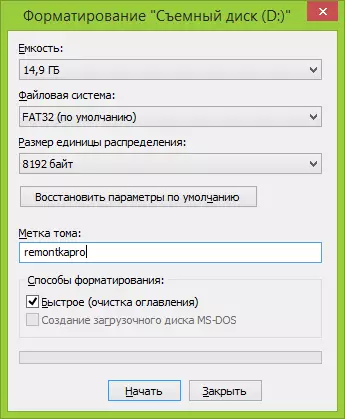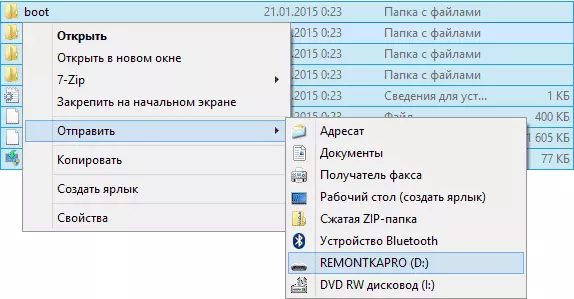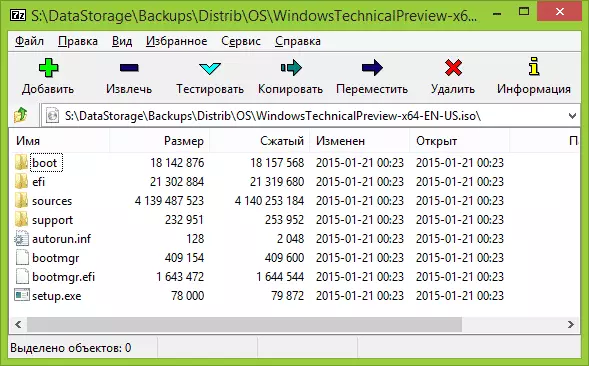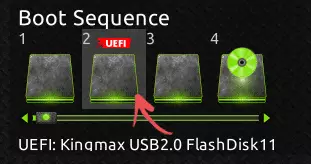
I note that the Guide below will work if your motherboard uses UEFI software, and write Windows 8.1 or Windows 10 (perhaps it will work on the simple eight, but did not check).
Another important point: the described is fully suitable for official images of ISO and distributions, with different kind of "assemblies" there may be problems and it is better to use other ways with them (these problems are caused by either the presence of files more than 4GB, or the absence of the necessary files for EFI downloads) .
The easiest way to create an installation USB USB flash drive Windows 10 and Windows 8.1
So, we will need: a clean flash drive with a single section (desirable) FAT32 (required) sufficient volume. However, it should not be empty to be, the main thing is that the last two conditions are performed.
You can simply format the USB flash drive in FAT32:
- Right-click on the drive in the explorer and select "Format".
- Install the FAT32 file system, the "Fast" marker and formatting. If the specified file system cannot be selected, then look at the article about the formatting of external drives in FAT32.

The first stage is completed. The second required action to create a boot flash drive is simply copied all the Windows 8.1 or Windows 10 files per USB drive. This can be done in the following ways:
- Connect an ISO image with a distribution system in the system (in Windows 8, you do not need programs, in Windows 7 you can use Daemon Tools Lite, for example). Select all the files, right click with the mouse - "send" - the letter of your flash drive. (For this instruction, I use this method).

- If you have a disk, not ISO, you can simply copy all the files on the USB flash drive.
- You can open an ISO image with an archiver (for example, 7zip or WinRAR) and unpack it on a USB drive.

This is all, the process of recording the installation USB is completed. That is, in fact, all actions are reduced to the choice of FAT32 file system and copy files. Let me remind you to work only with UEFI. Check.

As you can see, the BIOS determines that the flash drive is loaded (UEFI icon at the top). Installation from it is successful (two days ago I installed Windows 10 second system from such a drive).
Such a simple way is suitable for almost everyone who has a modern computer and the installation drive needed for its own use (that is, you do not install a regular system for dozens of PCs and laptops of different configurations).
